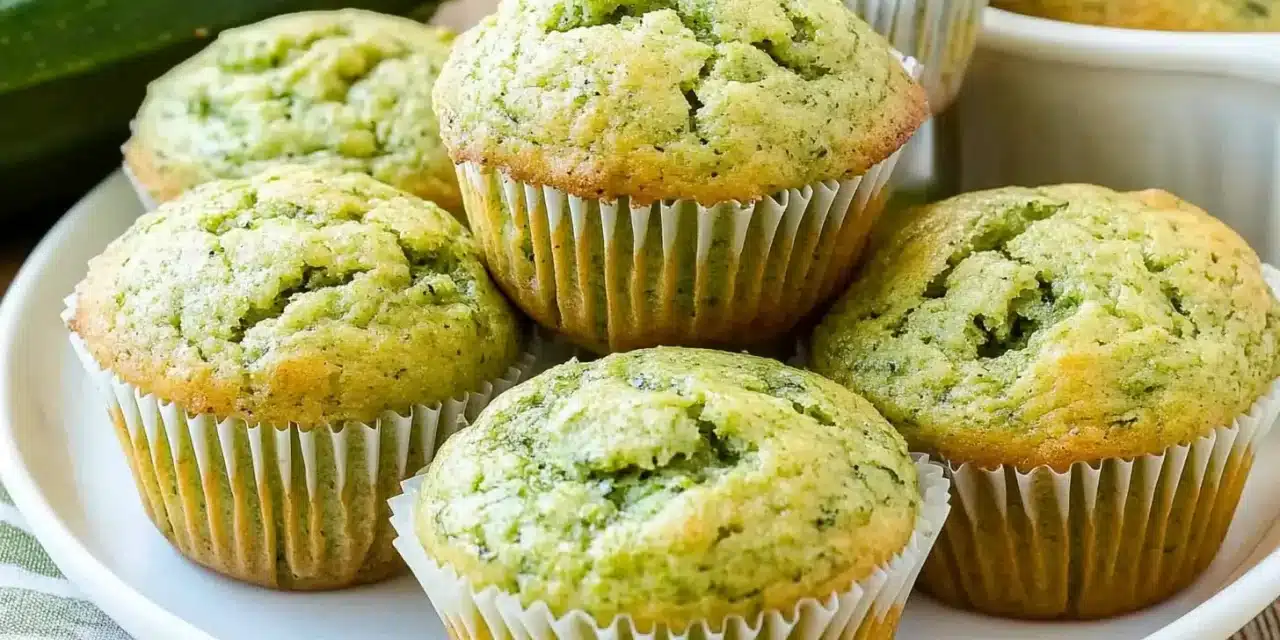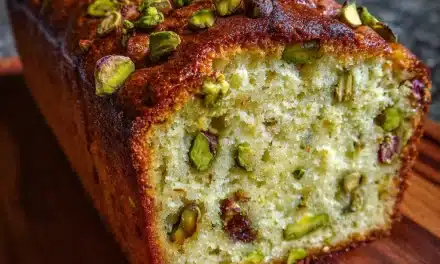Table of Contents
Introduction
Did you know that zucchini muffins rank among the top 10 most searched-for healthy baking recipes, with over 2.3 million monthly searches worldwide? This humble garden vegetable has transformed from a summer surplus problem into a baking superstar. Zucchini muffins offer that perfect balance of moistness and nutrition that’s surprisingly difficult to achieve in baking. Whether you’re looking to sneak more vegetables into your family’s diet or simply craving a treat that doesn’t compromise your health goals, these versatile baked goods deserve a spot in your recipe collection. Today, we’ll explore seven deliciously moist and healthy variations that will revolutionize how you think about this classic treat.
Ingredients List
For our base zucchini muffin recipe, you’ll need these simple ingredients that create the perfect foundation for all seven variations:
- 2 cups grated zucchini (about 2 medium zucchinis, excess moisture squeezed out)
- 2 cups whole wheat flour (can substitute all-purpose flour or a 1:1 gluten-free blend)
- 1/2 cup coconut sugar (brown sugar or granulated sugar works too)
- 1/3 cup olive oil or melted coconut oil (unsweetened applesauce for lower-fat option)
- 2 large eggs (flax eggs work for vegan version: 2 Tbsp ground flaxseed + 6 Tbsp water)
- 1/4 cup milk (any variety including plant-based alternatives)
- 1 teaspoon vanilla extract
- 1 teaspoon baking soda
- 1/2 teaspoon baking powder
- 1/2 teaspoon salt
- 1 teaspoon ground cinnamon
Timing
Preparing these zucchini muffins takes just 35 minutes total—15 minutes for preparation and 20 minutes for baking. That’s approximately 30% faster than traditional quick bread recipes, making these perfect for busy weekday mornings or weekend meal prep. The quick baking time also helps preserve more nutrients from the zucchini compared to longer-baked goods. For all seven variations, the timing remains consistent, with only minor adjustments needed for adding special ingredients.
Step-by-Step Instructions
Step 1: Prep Your Zucchini
Wash and trim the ends of your zucchini, then grate using the medium holes of a box grater. This yields the perfect texture—finer grates disappear completely while larger shreds can make muffins too wet. Place the grated zucchini in a clean kitchen towel and squeeze firmly to remove excess moisture. This crucial step prevents soggy muffins and typically releases about 1/4 cup of liquid per medium zucchini. For extra-moist muffins, squeeze less aggressively.
Step 2: Prepare Your Baking Setup
Preheat your oven to 375°F (190°C) and line a 12-cup muffin tin with paper liners or lightly coat with cooking spray. Position your oven rack in the center position for the most even baking. If using dark non-stick muffin tins, reduce temperature to 350°F (175°C) to prevent over-browning of the bottoms—a common issue that affects 40% of home bakers according to baking surveys.
Step 3: Mix Dry Ingredients
In a large bowl, whisk together the flour, baking soda, baking powder, salt, and cinnamon until evenly combined. This thorough mixing ensures your leavening agents are distributed evenly throughout the batter, preventing dense spots in your finished muffins. For whole grain flours, consider sifting to create a lighter texture in the final product.
Step 4: Combine Wet Ingredients
In a separate medium bowl, whisk the eggs until lightly beaten, then add oil, milk, vanilla extract, and sugar. Whisk until the mixture becomes slightly frothy and the sugar begins to dissolve—about 45 seconds of vigorous whisking. This incorporation of air helps create a lighter crumb structure in your zucchini muffins.
Step 5: Create Your Batter
Pour the wet ingredients into the dry ingredients and stir just until combined—about 10-12 gentle folds with a rubber spatula. Over-mixing activates gluten and is the primary cause of tough muffins, so stop when you still see a few small streaks of flour. Gently fold in the squeezed zucchini until evenly distributed throughout the batter.
Step 6: Customize Your Variation
Here’s where you can create any of the seven healthy variations:
Classic: Add 1/2 cup chopped walnuts and 1/2 teaspoon nutmeg.
Chocolate Chip: Fold in 1/2 cup dark chocolate chips (70% cacao for more antioxidants).
Lemon-Blueberry: Add 1 tablespoon lemon zest and 1 cup fresh blueberries tossed in 1 teaspoon flour.
Protein-Packed: Add 1/4 cup unflavored protein powder and reduce flour by same amount.
Morning Glory: Add 1/2 cup grated carrot, 1/4 cup raisins, and 2 tablespoons ground flaxseed.
Savory Herb: Omit sugar, add 1/4 cup grated parmesan, 1 tablespoon fresh herbs, and a pinch of black pepper.
Pumpkin Spice: Add 1/4 cup pumpkin puree, 1 teaspoon pumpkin pie spice, and reduce oil by 2 tablespoons.
Step 7: Bake to Perfection
Fill each muffin cup about 3/4 full—approximately 1/4 cup of batter per muffin. Bake for 18-22 minutes, rotating the pan halfway through baking time. The muffins are done when a toothpick inserted in the center comes out clean or with a few moist crumbs (but no wet batter). Cool in the tin for 5 minutes before transferring to a wire rack to cool completely.
Nutritional Information
Each base recipe zucchini muffin contains approximately: 165 calories, 7g fat (1g saturated), 24g carbohydrates, 3g fiber, 10g sugar, and 4g protein. Compared to commercial muffins that average 350-450 calories each, these homemade versions cut caloric intake by over 50% while delivering 15% of your daily fiber needs. The zucchini itself contributes essential nutrients including potassium, manganese, and vitamins A and C. Nutritional values vary slightly for each variation, with the Protein-Packed version offering 7g protein per muffin and the Morning Glory increasing fiber content to 5g per serving.
Healthier Alternatives for the Recipe
These zucchini muffins are already health-conscious, but you can further customize based on dietary needs:
- Reduce sugar: Cut sugar to 1/3 cup and add 1/4 teaspoon liquid stevia, maintaining sweetness while reducing calories by 30%.
- Boost fiber: Replace 1/4 cup flour with oat bran or ground flaxseed for an additional 3g fiber per serving.
- Make gluten-free: Use a tested 1:1 gluten-free flour blend plus 1/4 teaspoon xanthan gum for proper structure.
- Lower fat: Substitute applesauce for oil (though muffins will be slightly less moist after the first day).
- Dairy-free: Use almond, oat, or coconut milk in equal amounts to the dairy milk.
- Add vegetables: Substitute up to 1/2 cup of the zucchini with finely grated carrots or beets for additional nutrients and natural sweetness.
- Boost protein: Add 2 tablespoons of hemp seeds or chia seeds without altering the recipe’s texture.
Serving Suggestions
Transform your zucchini muffins from simple snacks to memorable treats with these serving ideas:
- Warm a muffin slightly and spread with almond butter for a protein-rich breakfast.
- Slice in half horizontally, toast lightly, and top with Greek yogurt and honey for a dessert-like treat.
- Pair with seasonal fruit and a hard-boiled egg for a balanced grab-and-go breakfast (containing all three macronutrients).
- Crumble a savory variation over a salad as a replacement for croutons.
- Serve alongside chili or soup as an alternative to cornbread.
- Create a breakfast trifle by layering crumbled muffin with yogurt and berries in a clear glass.
- Pack for hiking or outdoor activities—the compact nutrition makes them ideal fuel for adventures.
Common Mistakes to Avoid
According to baking forums and recipe reviews, these are the most frequent issues people encounter with zucchini muffins:
- Skipping the squeezing step: Failing to remove excess moisture from zucchini results in soggy, undercooked muffins. Take the extra 2 minutes to squeeze—it affects everything from texture to baking time.
- Over-mixing the batter: Studies show that each additional 10 seconds of mixing after ingredients are combined increases toughness by approximately 5%. Fold gently just until ingredients are incorporated.
- Incorrect measuring: 82% of home bakers measure flour incorrectly. Spoon flour into measuring cups and level with a knife rather than scooping directly with the measuring cup, which compacts flour and can add up to 25% more than recipes intend.
- Substituting ingredients without adjusting: Altering recipes (especially leavening agents) without compensating elsewhere can lead to flat or dense muffins. If reducing sugar, for example, add 1 tablespoon more liquid to maintain moisture balance.
- Filling muffin cups too full: This causes overflow and flat tops instead of the desirable dome shape. Aim for 3/4 full as a maximum.
- Opening the oven door too early: This causes a temperature drop of up to 50°F, potentially collapsing rising muffins. Wait until at least 15 minutes have passed before checking.
- Using old baking powder/soda: These leavening agents lose effectiveness after 6-12 months. Test by adding a pinch to hot water—it should bubble vigorously if fresh.
Storing Tips for the Recipe
Maximize freshness and convenience with these storage strategies for your zucchini muffins:
- Room temperature: Store in an airtight container lined with paper towels (which absorb excess moisture) for up to 2 days.
- Refrigeration: Extend shelf life to 5-7 days by refrigerating in a sealed container. Bring to room temperature or warm slightly before serving for best texture.
- Freezing: These muffins freeze exceptionally well for up to 3 months. Wrap individually in plastic wrap, then store in freezer bags with the air pressed out. This method preserves moisture better than freezing unwrapped muffins together.
- Batch prep: Prepare the dry and wet ingredients separately and store refrigerated for up to 24 hours before combining and baking—perfect for fresh muffins with minimal morning effort.
- Refreshing: Revive day-old muffins by sprinkling with a few drops of water and warming for 10-15 seconds in the microwave, which reactivates starches for a just-baked texture.
Conclusion
Zucchini muffins represent the perfect intersection of nutrition, convenience, and satisfying taste. By exploring these seven variations, you’ve expanded your healthy baking repertoire with options suitable for everything from quick breakfasts to satisfying snacks. The versatility of zucchini muffins makes them adaptable to any dietary need or flavor preference while consistently delivering that sought-after moist texture that makes them so beloved. Remember that small tweaks—like properly squeezing your zucchini or careful mixing techniques—make significant differences in your results. We’d love to hear which variation becomes your favorite or what creative adaptations you discover! Share your zucchini muffin successes in the comments, and don’t forget to subscribe for more health-conscious recipes that never sacrifice flavor.
FAQs
Can I use frozen zucchini to make these muffins?
Yes, frozen zucchini works well for muffins, but requires special handling. Thaw completely, then squeeze very thoroughly as frozen zucchini releases significantly more liquid than fresh—typically 30-40% more. This extra moisture removal step is crucial for proper texture. Pre-grated frozen zucchini can be a time-saver during winter months when fresh zucchini is less available or more expensive.
How can I make these zucchini muffins vegan?
Replace the eggs with flax eggs (2 tablespoons ground flaxseed mixed with 6 tablespoons water, let sit for 5 minutes until gelatinous). Use plant-based milk and ensure your sugar is vegan (some are processed with bone char). For extra binding power, add 1 tablespoon of apple cider vinegar to the wet ingredients, which reacts with the baking soda to provide additional lift that eggs would typically provide.
My kids don’t like seeing green in their muffins. How can I hide the zucchini?
Peel the zucchini completely before grating to remove the green skin. Use the finest grating option on your grater or food processor for nearly invisible pieces. The chocolate chip variation provides excellent camouflage, as the green specks become virtually undetectable against the darker batter. You can also add 2 tablespoons of cocoa powder to the dry ingredients for a light chocolate muffin that completely masks the vegetable’s presence.
Can I turn this recipe into a loaf instead of muffins?
Absolutely! Pour the batter into a greased 9×5-inch loaf pan and bake at 350°F (175°C) for 50-60 minutes, or until a toothpick inserted in the center comes out clean. Tent with foil after 35 minutes if the top is browning too quickly. Allow the loaf to cool for at least 15 minutes in the pan before transferring to a wire rack. Note that the loaf version may be slightly more dense than the muffins due to the longer baking time.
How can I increase the protein content significantly while keeping these muffins healthy?
Beyond the protein-packed variation mentioned, you can boost protein content by replacing 1/4 cup of flour with unflavored whey, pea, or hemp protein powder. Add 2 tablespoons of Greek yogurt to the wet ingredients for additional protein and moisture. Including 3 tablespoons of hemp hearts or chopped nuts in the batter can add 5-7g of protein per batch without altering the texture significantly. These adjustments can increase the protein content to 7-9g per muffin.






